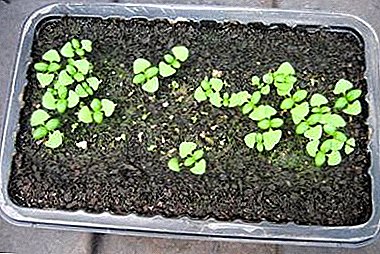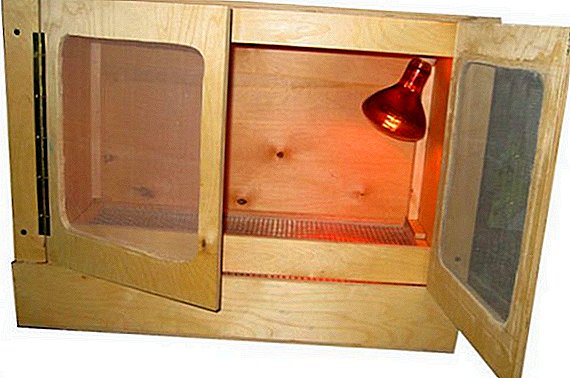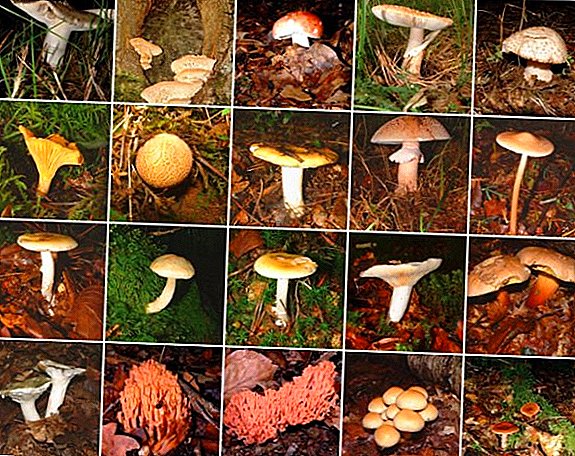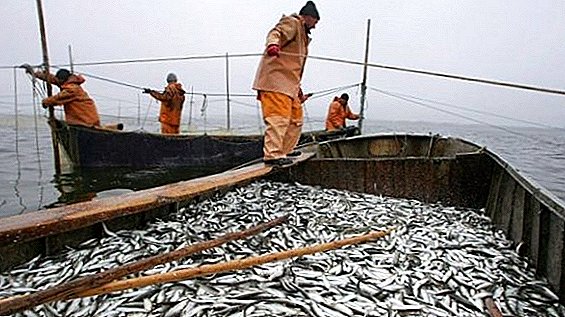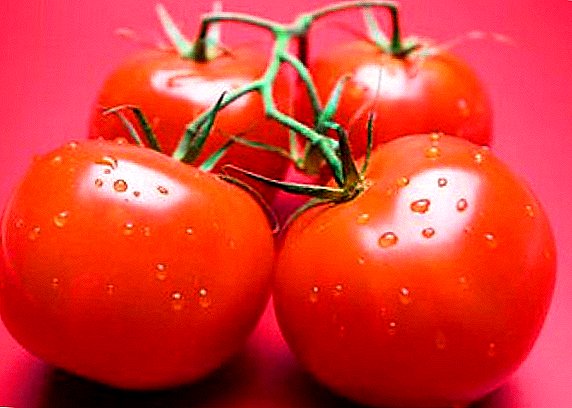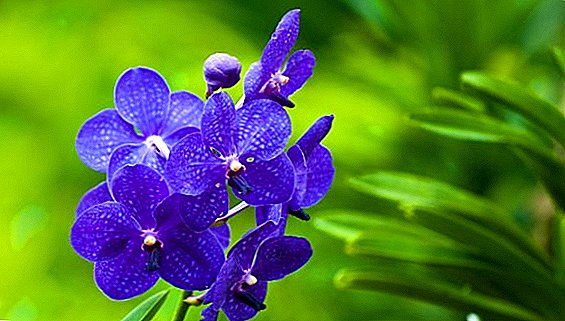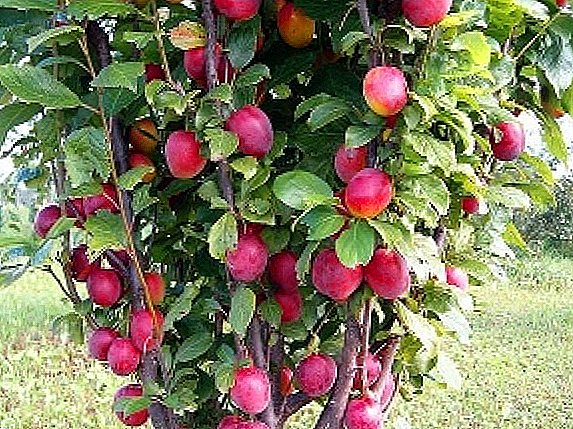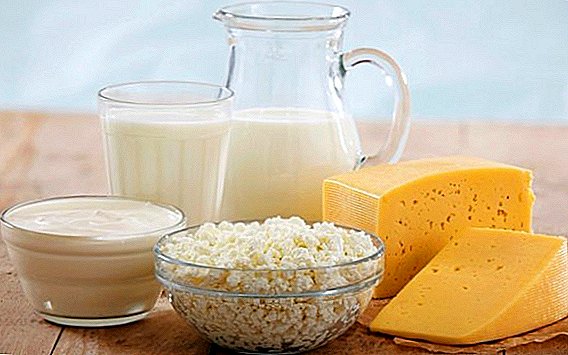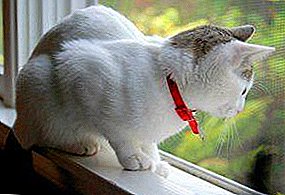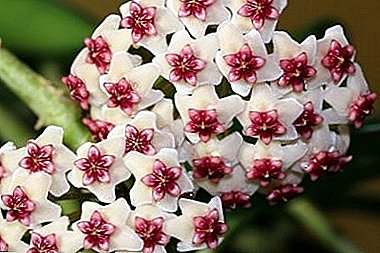
Plants of the species Hoya Obovata belong to a genus named after the English gardener, breeder and botanist Thomas Hoy, who had worked for forty years with exotic plants in the Duke of Northumberland's greenhouses.
This type of hoi has a strong, curly stem, with age woody and fleshy glossy rounded (up to 8 cm in diameter) green leaves with bright colors.
Grouped flowers on 20-30 pieces - light pink, five-pointed. A crown of the same shape, but of a richer shade, adorns the middle of each flower, emitting transparent nectar in abundance.
Scented flowers themselves the night smell stronger - sweet honey aroma with a hue that is peculiar to the khoi, which reminds some of the fresh radish cut.
Hoya Obovata grows in natural conditions on the Indonesian islands, in India, Thailand and Fiji.
Despite such exotic origins, the plant feels great in room culture.
Create suitable conditions for him for growth, full development, vegetative reproduction and annual flowering is not at all difficult.
Home care
Lighting
This kind of hoi more well-lit rooms will do with windows of southern directions, but it shouldn't be in the sun for a long time after all: when there is an excess of “sunburn”, the color of the leaves becomes lighter, they form drying, browning areas - sunburns.
“Changing places” and, accordingly, changing the nature of the lighting is also an undesirable process: during rearrangements, hoya loses flowers and buds, and also sheds leaves.
Temperature
In summer, the optimum temperature range - from 17 to 25 degrees, and in winter a rest period at a temperature is useful. 10-15 degrees.
Drafts harm the plant.
Priming
Soil in this case any suitable - Of those that are fertile enough, loose, have a neutral or weakly acid reaction.
Hoya Obovata grows well in ordinary garden soil, and in universal soil from the store, and in a mixture of leaf and sod land with peat, humus and sand, in which all ingredients are taken in equal proportions.
Landing

The landing capacity should not be too big with a mandatory drain hole.
Old pots from under other plants for planting hoi are not suitable; New container should be thoroughly cleaned.
Before planting a plant, place it at the bottom of a container. drainage layer (expanded clay, small pebbles, brick or ceramic battle).
Then pour a small amount of soil, on top of it have the root system with the saved, if possible, earthy clod.
For effective growth and flowering, it is useful to plant several young plants in one pot.
Dust the soil mixture to the desired level, carefully her tamping.
Provide support for sprouting stems.
Transfer
Young hoyi are transplanted every year, adult copies - every 2-3 years and less.
Transplant must be as a matter of fact, with a transshipment that preserves the former earthen room as much as possible, and the new pot is chosen not too spacious.
Shortly after purchase the plant is transplanted, since before selling, for a better presentation, hoyas are generally supported with stimulants. With such a transplant, the substrate is also removed from the root system, and in this case the earthen room is not preserved.
Watering
Between the moisture inlets, the earthen room should dry out; excess, and even more so, the stagnation of moisture is unacceptable.
With a cold wintering irrigation spend even less.
Air humidity
The moisture content in the air can be moderate, but in the summer this spray will need spraying.
Top dressing
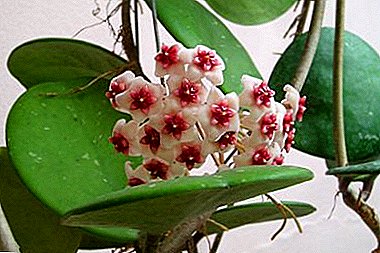
During intensive growth and during the flowering hoya of this species, especially young specimens, it is possible to occasionally feed with complexes for flowering succulents or with a significantly diluted solution of universal fertilizers.
Pruning
Potentially such a winding vine can live for decades and quickly grow stalks 10 meters long. In room culture, its growth should be limited to spring pruning and pinching.
Besides, shortening an actively growing shoot stimulates the development of lateral buds and, accordingly, the foliage density and flowering opulence.
Practically, after the fourth leaf, the shoot can be cut or pinch.
Bloom
Regular long-term (up to half a year) flowering can be ensured by observing the basic conditions for keeping this vine in room culture, as well as limited watering during a cool wintering season.
Additionally, you can stimulate flowering
, if you immerse the hoya pot for two hours in warm water and then spray the liana with water at a temperature of 30-40 degrees.
Breeding
Hoyas of this species are propagated most often and most easily by cuttings and stem layers. Leaf and seed multiplication is much more difficult.
Seed propagation

Seeds on room hoyah not formed. However, the seed must be fresh: seed germination is rapidly declining.
The seed pod is lightly dried and then sown in a very loose moist substrate with a significant admixture of sphagnum. Shoots appear, as a rule, quickly, during the first week, but after that the young hoi lays the main danger: waterlogging, rotting and death.
This is all the more likely that heat, high humidity, and good lighting are essential for the germination and development of seedlings. For the prevention of fungal diseases are useful spraying Bordeaux liquid. After about 3 months, after the emergence of several pairs of true leaves, seedlings are seated in separate containers.
Reproduction by cuttings
This is the easiest way to reproduce: spring or summer cut off short cuttings, on which there are two growth nodes and some leaves. The lower section is treated with a root formation stimulator and placed in a dark vessel with water so as to immerse the lower node. It is also desirable to increase the humidity.
You can root cuttings immediately in the ground. To do this, adding coarse sand or perlite, prepare a soil mixture with high moisture permeability. In it is placed a stalk, processed by the lower section of the root formation stimulator, bury it to the first node and germinate at high humidity for two to three weeks.
A new plant is blooming, obtained by cutting, in the fourth year.
Propagation by stem layers
For this breeding method incised old escapeThe incision site is surrounded with a wet sphagnum and wrapped with plastic.
When roots are formed and germinate through sphagnum, the upper part of the shoot, together with the moss and root system, is planted in a separate container.
Leaf reproduction
Reproduction is possible with a leaf with a single axillary bud; it is carried out in the same way as rooting the cutting directly in the soil, but passes harder; often the root system develops very slowly, growth as it solidifies at the initial stage of one leaf and one kidney.
Care errors

Hoya obovata sheds leaves - a consequence of three "over-": permutations and / or hypothermia and / or overmoistening.
Liana need whenever possible do not move, optimize temperature and humidity conditions, do not use cold water for irrigation.
No flowering - low illumination, warm wintering. It is necessary to strengthen the lighting and organize the winter content in a cool place.
The plant drops buds and flowers - permutation or dry and heated air. It should not be forgotten that hoya obovata is a plant of “unchanged place”, which needs to be sprayed in summer.
Diseases and pests
Improper care weakens the plant and can be affected by bacterial and fungal infections.
In such cases, treatment with fungicides helps. - such as Bordeaux liquid.
As a preventive measure, it is recommended to wash the leaves under the shower and to optimize conditions of detention.
Inadequately maintained specimens settled red spider mite, aphid, shield; As a means of first aid, a soap solution is used, or a cotton wool dipped in alcohol, which removes pests. Completely rid of them can only systemic insecticides.
For the prevention of nematode damage, the soil substrate and container must be sterilized before planting.
A native of exotic islands, hoya obovata, does not require too much.
Determine a permanent bright spot for it, provide a cool wintering, do not overmoist, cut it in time - and it will grow quickly, release new glossy round leaves and regularly bloom, exuding one of those unusual flavors that smell the distant jungle.
A photo
Next you will see a photo of Hoya Obovat.






